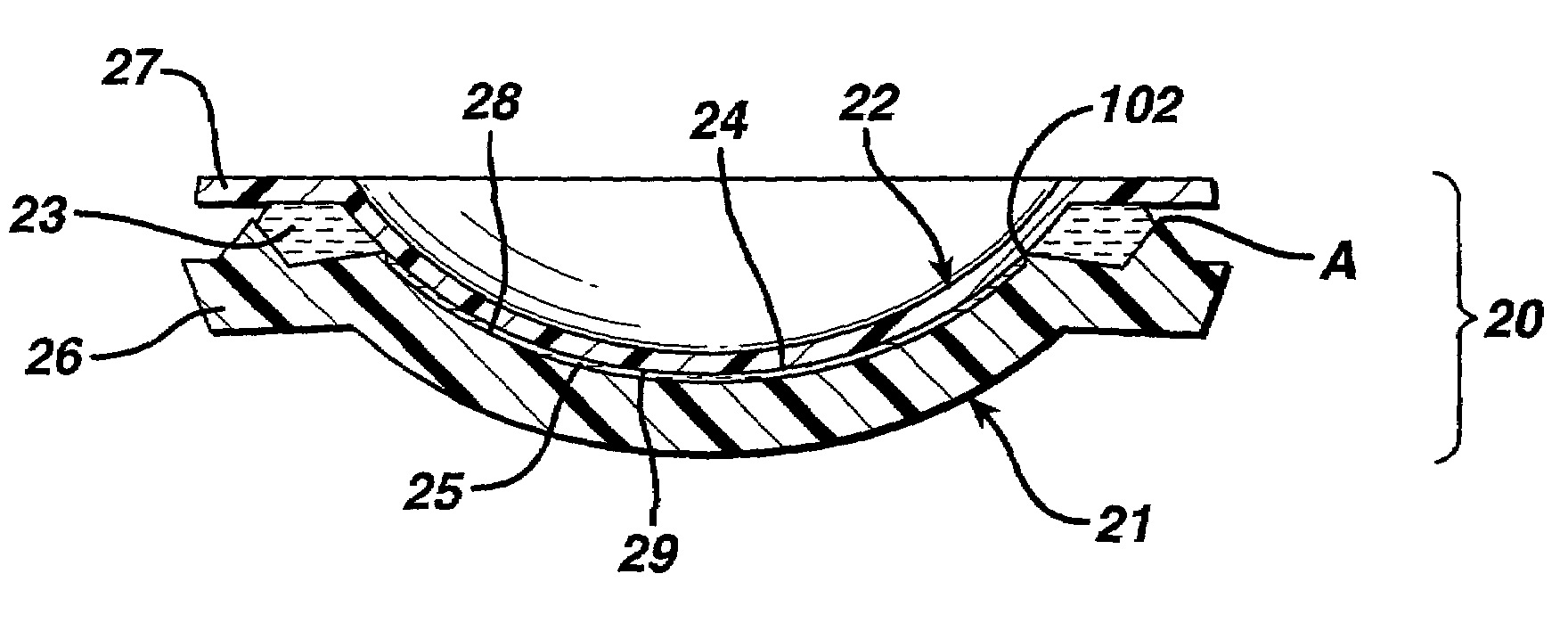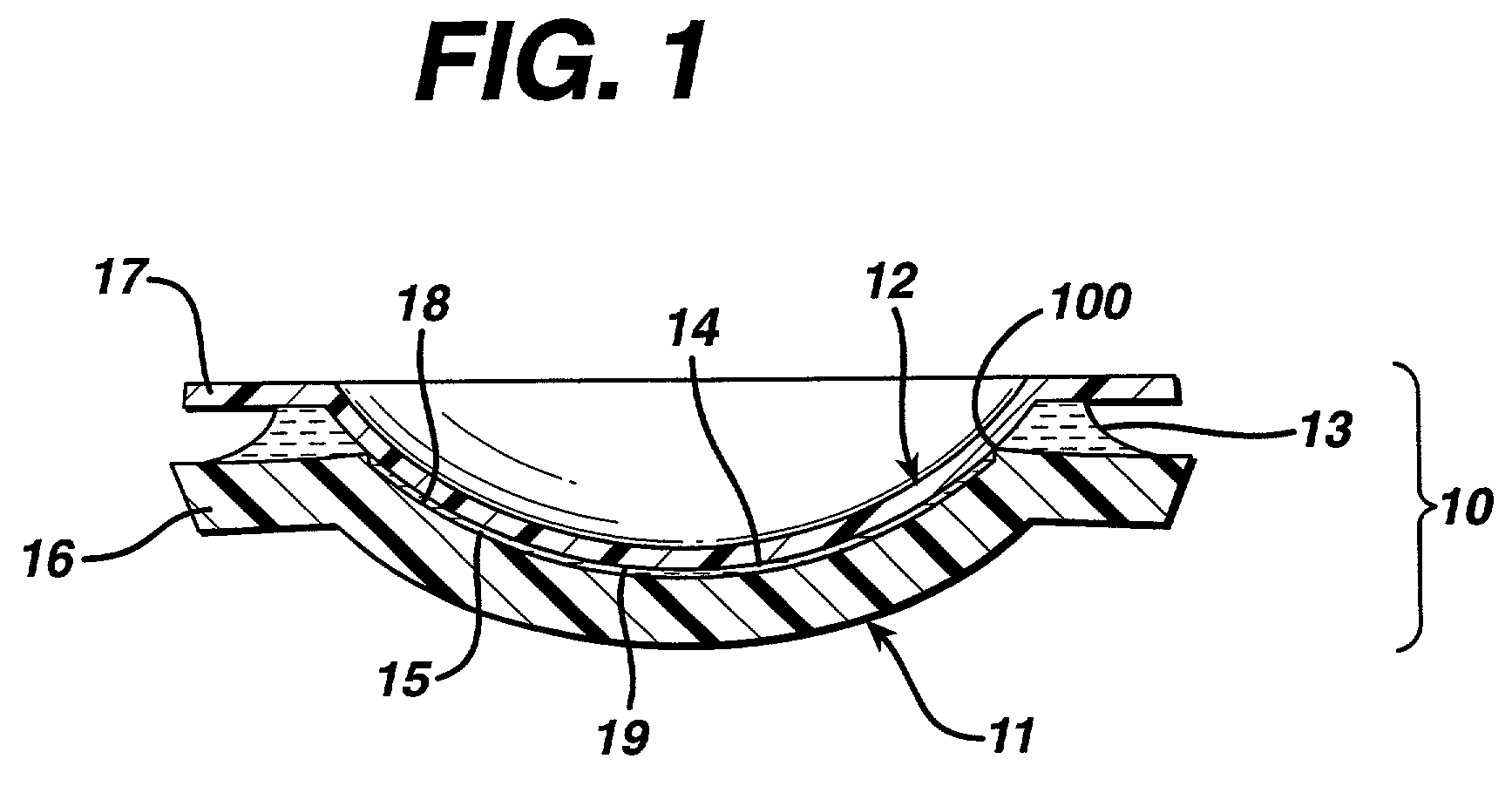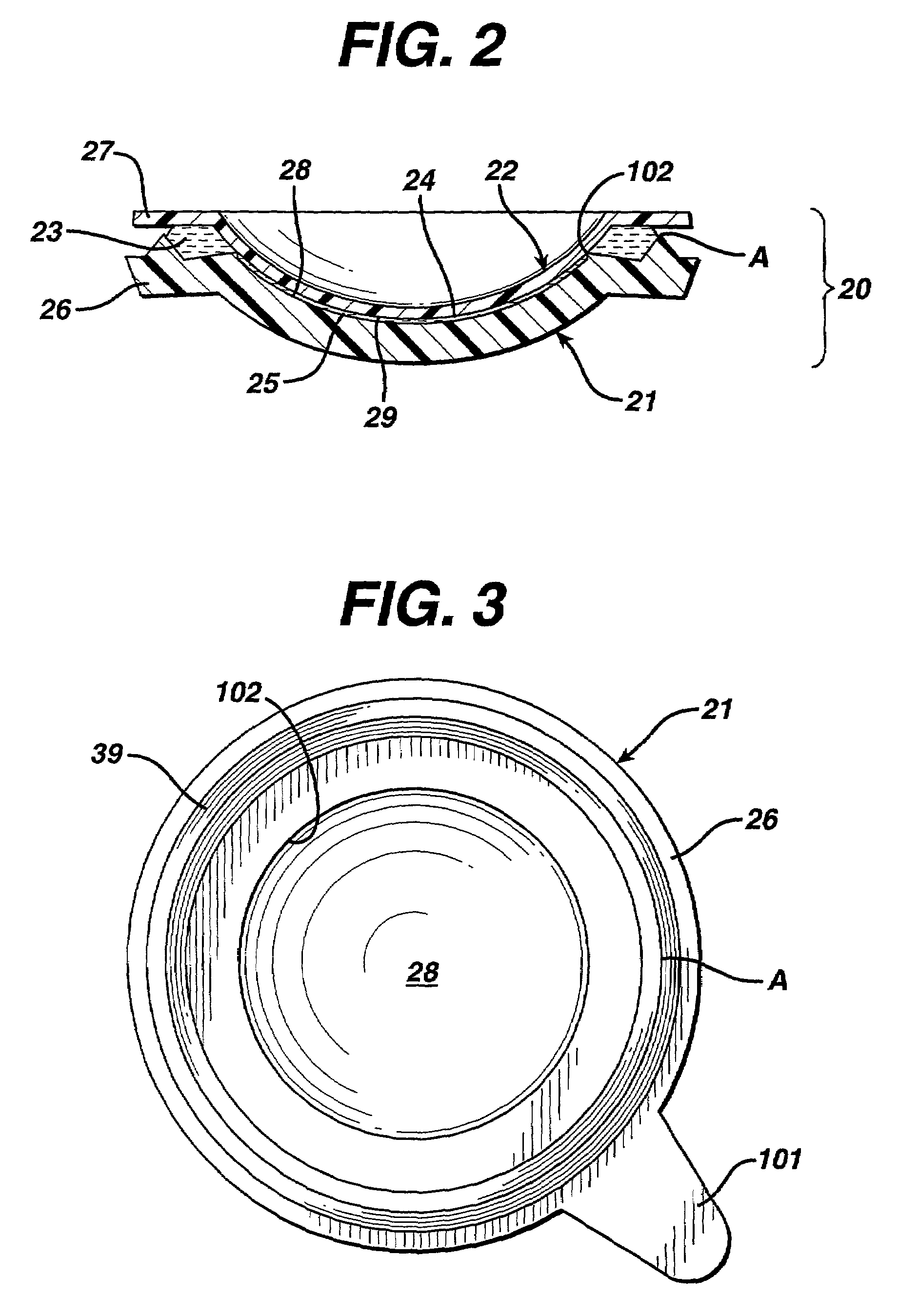Mold for forming a contact lens and method of preventing formation of small strands of contact lens material during contact lens manufacture
a technology of contact lens and mold, which is applied in the direction of dough shaping, manufacturing tools, instruments, etc., can solve the problems of contact lens being rejected, excess reactive mixture overflowing the cavity, and large formation of reactive mixture thin pieces, so as to reduce the amount of surface area
- Summary
- Abstract
- Description
- Claims
- Application Information
AI Technical Summary
Benefits of technology
Problems solved by technology
Method used
Image
Examples
Embodiment Construction
[0016]FIG. 1 shows a cross-section of a prior art contact lens mold 10 which consists of a first mold portion 11, and a second mold portion 12. The mold 10 is shown assembled and dosed with a reactive mixture 15. Molds like the one shown and their use for molding contact lenses have been fully described in for example, U.S. Pat. Nos. 5,238,388; 5,326,505 and 5,540,410; incorporated herein by reference. Typically the mold portions comprise polystyrene, polypropylene, polyethylene or the like; however, more durable materials such as quartz or glass can be used to make the molds of this invention.
[0017]The first mold portion 11 and the second mold portion 12 define a cavity 14 within which a reactive mixture 15, e.g. reactive monomers or uncrosslinked polymers, react to form a contact lens. The reactive mixture 15 typically comprises a hydrogel forming composition, for example, it may comprise hydroxyethyl methacrylamide and / or other monomers, and crosslinkers, and / or other composition...
PUM
| Property | Measurement | Unit |
|---|---|---|
| Length | aaaaa | aaaaa |
| Length | aaaaa | aaaaa |
| Length | aaaaa | aaaaa |
Abstract
Description
Claims
Application Information
 Login to View More
Login to View More - R&D
- Intellectual Property
- Life Sciences
- Materials
- Tech Scout
- Unparalleled Data Quality
- Higher Quality Content
- 60% Fewer Hallucinations
Browse by: Latest US Patents, China's latest patents, Technical Efficacy Thesaurus, Application Domain, Technology Topic, Popular Technical Reports.
© 2025 PatSnap. All rights reserved.Legal|Privacy policy|Modern Slavery Act Transparency Statement|Sitemap|About US| Contact US: help@patsnap.com



